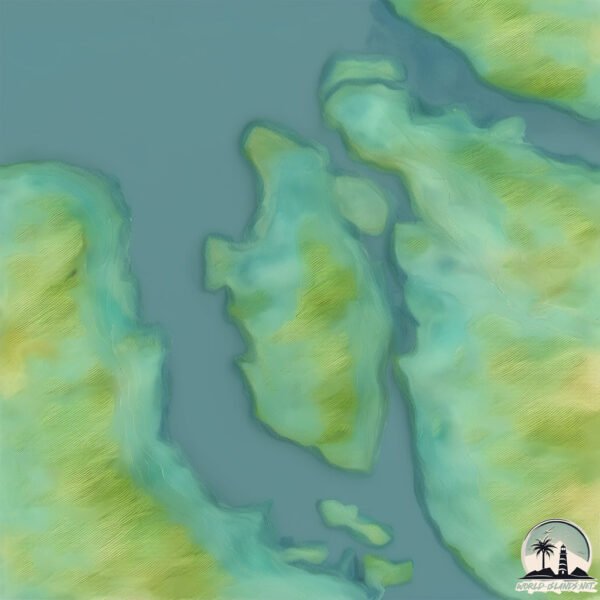Welcome to Amook , a Continental island in the Gulf of Alaska, part of the majestic Pacific Ocean. This guide offers a comprehensive overview of what makes Amook unique – from its geography and climate to its population, infrastructure, and beyond. Dive into the details:
Geography and size of Amook
Size: 33 km²Coastline: 54.5 kmOcean: Pacific OceanSea: Gulf of AlaskaContinent: North America
Amook is a Medium Island spanning 33 km² with a coastline of 54 km.
Archipel: –
Tectonic Plate: North America – Covers North America and parts of the Atlantic and Arctic Oceans, characterized by diverse geological features and varying levels of seismic activity.
The geographic heart of the island is pinpointed at these coordinates:
Climate and weather of Amook
Climate Zone: ContinentalClimate Details: Subarctic ClimateTemperature: Cold Summer
Climate Characteristics: Characterized by long, extremely cold winters and short, cool summers, often found in northern latitudes of North America and Eurasia.
Topography and nature of Amook
Timezone: UTC-09:00Timezone places: America/AnchorageMax. Elevation: 432 m Mean Elevation: 153 mVegetation: Mixed ForestTree Coverage: 76%
The mean elevation is 153 m. The highest elevation on the island reaches approximately 432 meters above sea level. The island is characterized by Hills: Gently sloping landforms with rounded tops, having a maximum elevation between 200 and 500 meters. Hills contribute to a varied landscape on islands.
Dominating Vegetation: Mixed Forest
Vegetation: 9 vegetation zones – Very Highly Diverse Island
Infrastructure and Travelling to Amook
Does the island have a public airport? no .
Does the island have a major port? no .
The mean population of Amook is 0 per km². Amook is Uninhabited. The island belongs to United States of America .
The name of the island resonates across different cultures and languages. Here is how it is known around the world: Arabic: جزيرة كودياك; German: Kodiak-Insel; Spanish: Isla Kodiak; French: Île Kodiak; Portuguese: Ilha Kodiak; Russian: Кадьяк; Chinese: 科迪亚克岛
Continuing your journey, Kodiak is the next notable island, situated merely km away.
Erecting igloos on Amook Island Kodiak AK
CampRedHook-KodiakAK #CampRedHook #KodiakAK #Kodiak #Campsite #Fishing #Hunting #KodiakBear.
Erecting igloos on Amook Island Kodiak AK
CampRedHook-KodiakAK #CampRedHook #KodiakAK #Kodiak #Campsite #Fishing ...
CampRedHook-KodiakAK #CampRedHook #KodiakAK #Kodiak #Campsite #Fishing #Hunting #KodiakBear.
Kodiak brown bear
Man vs. Bear on Amook Island.
Man vs. Bear on Amook Island.
Kodiak Alaska Beaches: Why a Rental Car is the Best Way to See Kodiak Island
This is part 2 of a two part video on exploring Kodiak Alaska by Car. ...
This is part 2 of a two part video on exploring Kodiak Alaska by Car. Here is the link to the first video if you missed it ...
United States of America is classified as Developed region: G7: Group of Seven – Major advanced economies, including Canada, France, Germany, Italy, Japan, the United Kingdom, and the United States. The level of income is High income: OECD.
News – Latest Updates and Headlines from Amook
Stay informed with the most recent news and important headlines from Amook. Here’s a roundup of the latest developments.
Loading...
Please note: The data used here has been primarily extracted from satellite readings. Deviations from exact values may occur, particularly regarding the height of elevations and population density. Land area and coastline measurements refer to average values at mean high tide.

